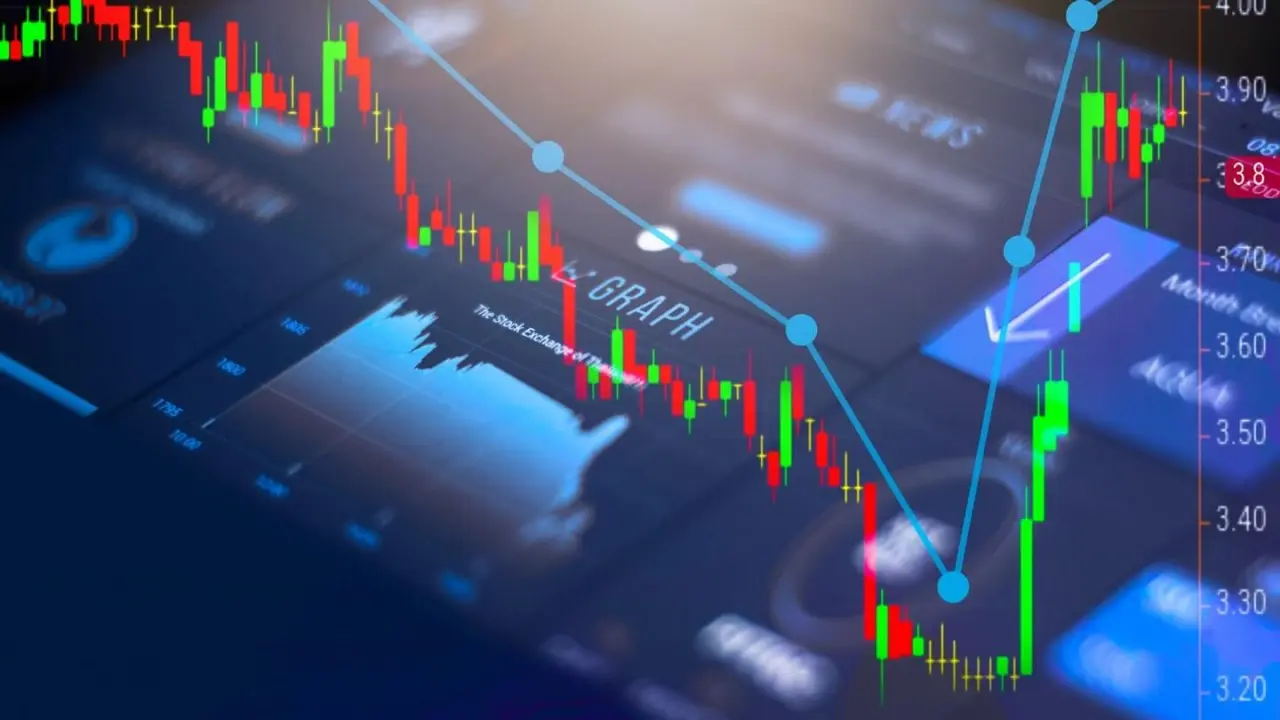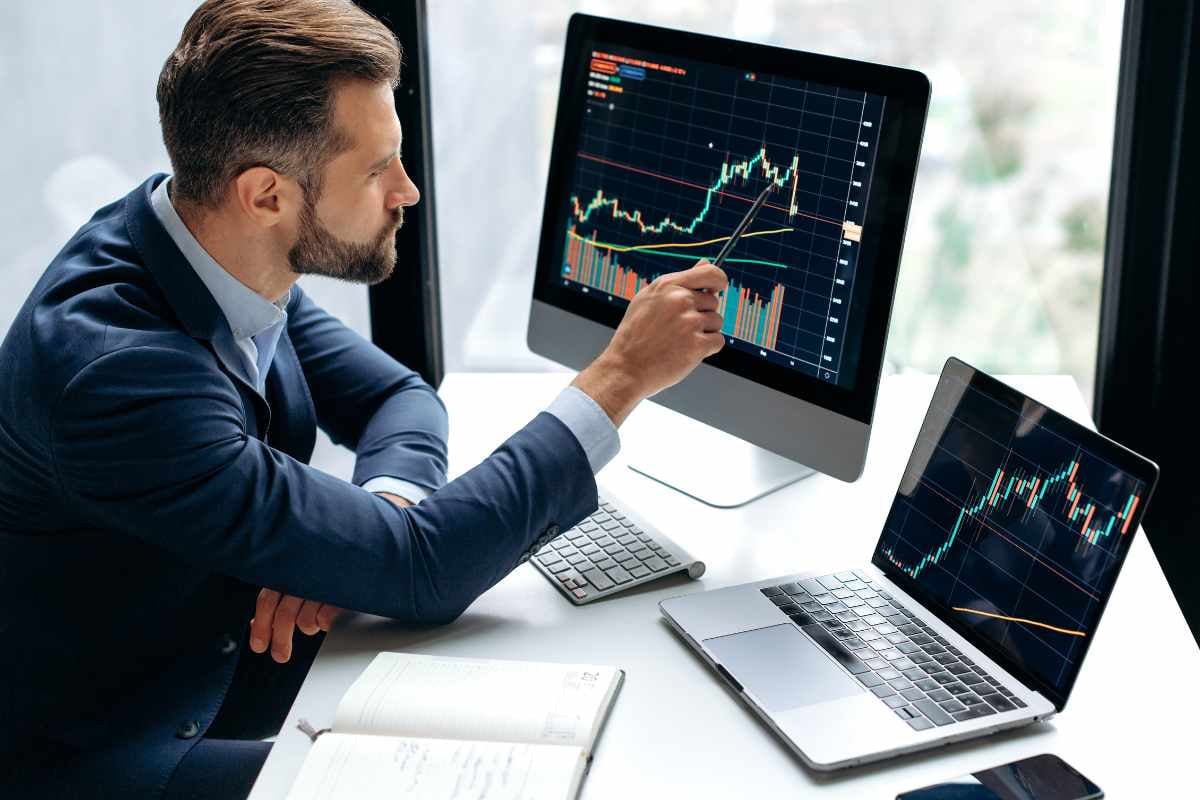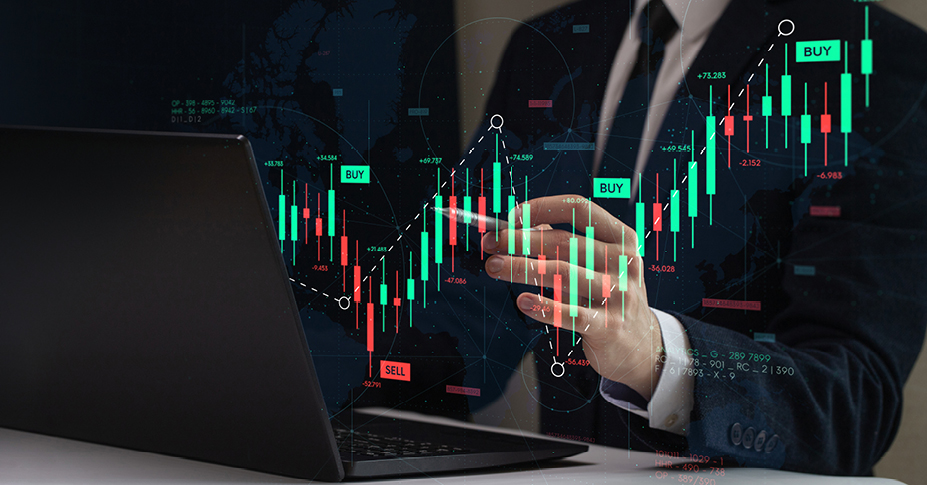Consider this: you check your account after a sharp market swing and wonder, Is Forex Trading Hard? That question matters because currency trading can offer real opportunities through leverage, tight spreads, and high liquidity. Still, it also brings market volatility, broker risk, and heavy demands on trading psychology and risk management.
This guide breaks down the pros and cons of forex trading — from potential profits, flexible hours, and varied trading strategies to the pitfalls of leverage, emotional traps, and the need for solid technical and fundamental analysis — so you can form a clear, realistic view and decide with confidence.
To help you transition from theory to practice, Goat Funded Trader offers a prop firm path that enables you to prove and refine your skills while trading with funded capital, providing real market experience, structured risk rules, and a way to scale without putting your own savings at immediate risk.
What is Forex Trading?

What Forex Trading Actually Is — A Clear Picture
Forex trading involves buying one currency while simultaneously selling another. Traders operate in currency pairs, such as EUR/USD or USD/JPY, and attempt to profit from fluctuations in exchange rates. The price of a pair indicates the number of units of the quote currency required to purchase one unit of the base currency. The market operates 24 hours a day across multiple time zones and offers deep liquidity, allowing orders to fill quickly, even in large sizes.
How a Trade Works — Practical Mechanics and Terms
When you place a forex trade, you choose to buy or sell a pair. You set position size in lots or units and track profit and loss in pips. Brokers offer margin, allowing you to control larger positions with less capital, which increases both potential gains and potential losses. Stop-loss and take-profit orders help manage risk and lock in levels where you accept losses or take gains.
Who Trades Forex and How You Get Access
Banks, hedge funds, corporations, governments, and retail traders all take part. Retail traders utilize online brokers and trading platforms that offer charts, various order types, and demo accounts for practice. Regulation, broker reputation, spreads, and execution quality are key factors to consider when selecting a broker. Do you prefer a regulated firm with strict capital requirements or a lower-cost provider with thinner spreads?
Leverage and Margin — Power and Peril
Leverage amplifies returns and increases the size of swings in your account. Margin requirements indicate the amount of capital you must post to open a position. Keep position sizing and risk per trade small enough to survive losing streaks. A clear risk-reward plan and consistent stop placement reduce the chance of a margin call.
Market Drivers — Why Prices Move
Currency movements are influenced by changes in interest rates, economic reports, political events, central bank actions, and cross-market flows, including those in equities and commodities. Short-term traders often use economic calendars and news feeds. Swing traders and investors look at interest rate differentials and carry trade opportunities. Technical patterns, order flow, and liquidity zones also guide trade entries and exits.
Tools Traders Use — Analysis and Orders
Traders use technical analysis, support and resistance, trend lines, indicators, and price action. Fundamental analysis focuses on key economic indicators, including GDP, employment, inflation, and central bank guidance. Order types include market, limit, stop, and trailing stop. Demo accounts allow you to test strategies without using real money, and backtesting provides valuable statistical insights.
Costs and Execution — Spreads, Slippage, and Overnight Fees
Every trade incurs costs, including spreads, commissions, slippage, and swap or rollover fees for holding positions overnight. Low spreads help short-term strategies, while stable execution reduces missed fills. Slippage rises in volatile sessions and around major news releases, so place orders carefully and account for transaction costs in your edge.
Risk Management and Psychology — Keeping Your Capital Intact
Risk per trade, maximum drawdown limits, and position sizing form the backbone of reasonable risk control. Use stop-loss orders and avoid over-leveraging. Emotional control matters as much as strategy. Do you follow rules even after a big win or loss? How you react under stress determines long-term survival.
How to Start — Practical Steps for New Traders
Open a regulated broker account and use a demo to learn platform functions and order handling: study risk management, practice position sizing, and test strategies with historical data. Start small with capital you can afford to lose and keep a trading journal to record setups, trade decisions, and outcomes.
Common Mistakes Traders Make — What to Avoid
Overleveraging, chasing trades, ignoring economic events, and failing to use stop-losses are the primary causes of most losses. Over-optimizing indicators to fit past data and failing to adapt to changing market conditions also hurt performance. Stick to a simple plan and refine it through disciplined practice and review.
Questions to Ask Yourself — Choosing a Path
Do you want active intraday trading or slower swing positions?
Do you accept the psychological stress of fast moves?
Can you dedicate time to studying and practicing?
Are you prepared to manage risk and trade with a plan?
Where to Find Reliable Information — Learning Resources
Look for regulated broker education centers, reputable books on technical and fundamental analysis, economic calendars, and community forums where traders share verified strategies. Use demo accounts and paper trading before risking real capital.
Related Reading
- What Is A Lot Size In Forex
- How Much Do You Need To Start Trading Forex
- How Profitable Is Forex Trading
- What Is Swap In Forex Trading
- Forex Trading Account Types
- How To Learn Forex Trading
- Automated Forex Trading
- Fibonacci Forex Trading
- Forex Trading Profit Per Day
Is Trading Forex Really Worth It?

Is Forex Trading Worth Your Time and Money?
Forex can pay off, but only for some traders. The market offers clear advantages, including deep liquidity and round-the-clock trading on weekdays, which enables active traders to enter and exit positions with tight spreads and fast order execution. Still, you face real risks from leverage, slippage, and sudden volatility, so assess your goals, risk tolerance, and available study time before you risk capital.
What Makes Forex Attractive to Traders
High liquidity means major pairs move on news without giant gaps most of the time, and you can trade long or short with equal ease. Brokers offer leverage and small lot sizing, which lets you control positions with less capital, and many provide low spreads and demo accounts for practice. You also get access to both technical analysis and fundamental analysis tools, a full economic calendar, and fast trade execution when you use a regulated broker.
Where Traders Often Lose Money
Leverage multiplies mistakes as well as gains; a few bad trades can wipe out an account. New traders often struggle with overtrading, poor risk management, and a trading psychology that allows losses to run while cutting winners short. Other hazards include broker fees, slippage, stop hunting with weak brokers, and scams that promise easy profits.
How Much Time, Capital, and Practice Are Needed
Begin with a demo account to familiarize yourself with pip value, lot size, margin requirements, and various order types, including stop-loss and take-profit orders. Expect to dedicate months of study and practice to building a consistent edge through backtesting and a trading journal. For live trading, risk no more than one to two percent of your account per trade and budget for drawdowns, commissions, and data fees.
Trading Styles and Tools That Matter
Scalping, day trading, and swing trading each demand different time commitments and risk controls. Technical indicators, price action, and support and resistance are widely used, while macro traders focus on interest rates, economic releases, and geopolitical risk. Use a financial calendar, watch for market gaps, and set alerts for major data releases to avoid unexpected moves.
Risk Management and a Realistic Mindset
Utilize stop-loss orders and position sizes that align with your risk tolerance. Maintain margin buffers to avoid margin calls and expect occasional slippage when market conditions are volatile. Trading psychology matters: discipline, patience, and a clear trading plan cut losses and preserve capital while you refine your strategy.
How to Improve Your Odds
Study risk management, learn both technical and fundamental analysis, and maintain a trade log to track your win rate, average win-loss ratio, and expectancy. Backtest strategies over several market regimes and practice with simulated accounts before trading real money. Choose a regulated broker with transparent fees and reliable order execution.
Do You Want Forex as Income or a Hobby?
Ask yourself whether you want consistent supplemental income, full-time trading, or a speculative side project. Different goals require different capital, rules, and stress tolerance, so define your target returns, allowable drawdown, and the time you can commit to learning and market monitoring.
Ready to scale your account without the usual barriers? Goat Funded Trader gives you access to simulated accounts up to $800K with the most trader-friendly conditions in the industry, no minimum targets, no time limits, triple paydays, and up to 100 percent profit split while offering customizable challenges or instant funding through our prop firm options. Join over 98,000 traders who've already collected more than $9.1 million in rewards, backed by our 2-day payment guarantee with a $500 penalty for delays; sign up to get access to up to $800K today and receive 25 to 30 percent off.
The Pros of Forex Trading

Trade Around the Clock (24 Hours a Day, Five Days a Week)
The forex market stays open from Monday morning in Asia to Friday evening in New York so that you can place trades at almost any hour during the business week. That continuous session stems from overlapping trading centers in Tokyo, London, and New York, which keeps price action active and driven by news. Want to trade after work or react to breaking global events? The market structure lets you do both.
Low Capital Required to Open an Account
Many brokers accept low minimum deposits, sometimes as little as fifty dollars, which lowers the barrier to entry for new traders. Low starting capital allows you to test strategies, learn order entry, and risk management without incurring large sums of money. You can scale position size as your skills and account grow.
Trade From Anywhere (Mobile and Desktop Access)
A smartphone or laptop with internet access provides full market access and charting tools. Modern trading platforms synchronize orders, indicators, and account data across devices, allowing you to monitor or adjust positions on the go. That flexibility helps part-time traders balance work and life with active trading.
Low Trading Costs
Many forex brokers charge no commission, so your main cost is the spread between bid and ask prices. Major currency pairs usually show tight spreads, which reduces friction for frequent trading and short-term strategies. Lower transaction costs help preserve gains and make small edge strategies viable.
High Liquidity
Forex is the largest financial market, characterized by deep pools of liquidity, particularly in major pairs such as EURUSD and USDJPY. You can enter and exit prominent positions quickly without moving prices much, which reduces slippage and improves order execution. That reliability supports scalping, day trading, and large institutional flows.
Leverage Options
Brokers offer leverage that allows you to control larger positions with a smaller capital outlay, sometimes at ratios comparable to those bankers provide to retail clients within regulatory limits. Proper margin and risk controls enable you to utilize leverage to increase potential returns while mitigating downside risk through stop-losses and effective position sizing. Treat leverage as a tool that improves both gain potential and risk exposure.
Frequent Trading Opportunities Due to Volatility
Currency values fluctuate constantly in response to economic reports, policy decisions, and geopolitical events, creating numerous opportunities for trend followers and short-term traders. Active price movement generates momentum, pullbacks, and breakouts that technical and fundamental traders can capitalize on. Staying informed on economic calendars enhances timing and trade selection.
Ability to Automate Your Trades
Forex platforms commonly support automated systems that execute trades when conditions match your rules, which removes emotional interference. Automation enforces discipline, executes backtested strategies, and provides round-the-clock monitoring for predefined setups. Programmers and non-programmers can both access automated tools through scripts or prebuilt expert advisors.
Diverse Currency Pairs for Greater Choice
You can choose from a broad range of currency pairs to match liquidity, volatility, and correlation goals. Major pairs offer tight spreads and steady liquidity, minors give alternative correlation opportunities, and exotic pairs introduce higher volatility and unique drivers. That variety supports diversification and strategy tailoring across markets.
Transparent Pricing
Forex trades are conducted over the counter between banks, brokers, and liquidity providers, but a global network of market makers and venues determines pricing. Public price feeds and interbank quotes enable easy comparison of spreads and execution quality across brokers. Traders can shop for competitive pricing and transparent terms of order execution.
Hedging Opportunities to Mitigate Risk
Companies and investors use foreign exchange (forex) contracts to lock in rates and mitigate unwanted currency fluctuations when they have international cash flows or foreign assets. Retail traders can apply hedging techniques to offset positions or limit portfolio currency risk through forward-style orders, options, or offsetting pairs. Hedging provides practical risk management beyond pure speculation.
Related Reading
- Forex Trading Candlestick Patterns
- Forex Trading Algorithms
- Risk Management In Forex Trading
- Forex Trading Day
- Minor Forex Pairs
- Forex Trading Vs Crypto Trading
- Advanced Forex Trading
- Copy Forex Trading
- Best Books On Forex Trading
- Best EA For Forex Trading
The Cons of Forex Trading

Volatility Risks Can Lead to Significant Losses
Market volatility in the forex market can push prices up and down rapidly. Sharp moves around economic releases, geopolitical news, or central bank statements can trigger slippage, hit stop-loss orders at worse prices, and deplete margin. Volatility creates chance and danger at the same time, so position sizing and real-time risk controls matter more than optimistic trade ideas. How will you size positions when a currency swings several hundred pips in a session?
Price Differences from No Central Exchange
Forex is traded over the counter, so quotes and spreads can vary between brokers and liquidity providers. That variability affects execution, bid-ask costs, and the proper fill you receive on market orders. Poorly regulated or low liquidity providers may widen spreads at crucial moments, creating hidden transaction costs and execution risk. Which broker controls your order flow, and how transparent are their prices?
Large Institutions Hold a Disproportionate Edge
Banks, hedge funds, and institutional desks run faster feeds, co-located servers, and advanced execution algorithms. They move large blocks, extract liquidity, and read order flow in ways retail platforms cannot match. Competing against that infrastructure means accepting that retail traders face information lag, market impact, and often inferior pricing. What edge will you build to offset that structural imbalance?
Leverage Magnifies Both Gains and Losses
Leverage allows a small deposit to control a prominent position, which simultaneously boosts returns and mitigates losses. High leverage produces significant swing exposure, so a 1 percent adverse move can eliminate a heavily leveraged margin deposit. That creates margin calls and the chance of losing more than the account if safeguards fail. Have you set clear margin rules and worst-case scenarios for position sizing?
The Mental Cost of Trading
Trading demands steady discipline under stress. Fear, greed, overtrading, and revenge trading can undermine plans, leading to poor entries and exits. Maintaining rules, a tested trading plan, and routines for breaks and review helps reduce emotional leaks in performance. What processes will you use to keep emotion from dictating size and timing?
No Dividends and Limited Passive Yield
Forex profits come from price movements and occasional rollover interest, known as swaps, not dividend streams. That means you rely on active decision-making to generate returns, rather than steady income from dividends or bond coupons. Carry trades can provide interest differentials, but they also incur carry costs and counterparty risk, and are not a substitute for predictable passive income. How does that fit with your income goals and time horizon?
Get 25-30% off Today - Sign up to Get Access to Up to $800K Today

Goat Funded Trader gives access to simulated accounts up to $800K with trader-friendly rules: no minimum targets, no time limits, and triple paydays with up to 100 percent profit split. Over 98,000 traders have already collected more than $9.1 million in rewards, backed by a two-day payment guarantee with a five-hundred-dollar penalty for delays. Choose between customizable challenges or start trading immediately with instant funding, and sign up to access up to $800,000 today with 25-30% off.
Questions Traders Often Ask, Answered Briefly
Can a beginner succeed? Yes, with structured learning, small risk, and consistent practice on demo accounts. How long to become consistently profitable? It varies, but many need months to a year of disciplined practice and review. What makes a funded program worthwhile? Larger capital, better payout splits, and fewer limitations on scaling when the rules align with your trading style. How do I protect myself from broker problems? Trade with regulated brokers, check order execution, and closely monitor spreads and slippage.
Small Actions That Improve Outcomes Today
Limit risk per trade to a fixed fraction of your equity, place stop orders before you click buy, and review losing trades without self-blame. Use a clear checklist for entries and exits, and automate position sizing where possible. If you want to leverage your investments without taking on full personal capital risk, consider a funded account that aligns with your strategy rules.
Related Reading
- Forex Options Trading Strategy
- Best Laptop For Trading Forex
- Forex Trading Course For Beginners
- Forex Trading App For Beginners
- How To Choose The Best Forex Broker
- Best Forex Pairs To Trade During New York Session
- Forex Trading Strategies For Beginners
- Forex Algorithmic Trading Strategies
- Best Forex Pairs For Beginners
.svg)
.avif)



.avif)





.svg)

.svg)